

What makes a school good? It’s about more than just test results
Education Policy Lead, Mitchell Institute, Victoria University
Research Chair in Education and Director of the Centre for International Research on Education Systems, Victoria University
Disclosure statement
Stephen Lamb has received funding from the Australian Research Council. Among the research papers cited are some that were undertaken on behalf of governments and external partners.
Jen Jackson does not work for, consult, own shares in or receive funding from any company or organisation that would benefit from this article, and has disclosed no relevant affiliations beyond their academic appointment.
Victoria University provides funding as a member of The Conversation AU.
View all partners
One of the more elusive goals of education research is answering the question: what makes one school perform better than another? The evidence base is growing , but so far the answer is: it depends.
School success depends on context. What works for one group of students and teachers might not work for another. Teachers themselves may vary in their effectiveness depending on the students they teach.
Some schools improve their performance by attracting more affluent and/or high achieving students. This strategy may lift performance in one school, but risks “ residualising ” neighbouring schools, leaving them to cope with increasing concentrations of disadvantage.
The socio-economic status of students is a major factor in school performance. It is harder for a school to achieve high academic performance with large numbers of students facing risk factors such as low family income, or parents with limited education who may struggle to provide support for learning. Many disadvantaged schools across Australia achieve results more than one year behind the national average.
Read more: Back to school – understanding challenges faced by Indigenous children
But just because schools in poorer areas may achieve lower results, it doesn’t mean these schools are “unsuccessful”, and schools in wealthier suburbs with higher average scores are “successful”. Schools in poorer areas can make a significant impact on their students’ lives. And lifting outcomes for disadvantaged students can transform lives and communities, across generations.
There are three key ways that schools in disadvantaged contexts achieve success that other schools can learn from.
1. Success is more than test scores
The most effective schools aren’t necessarily the highest academic performers. They are schools that yield better-than-anticipated results, bringing the best out of every student regardless of background.
Measures of school performance, including MySchool , typically take into account the socio-economic profile of the student community for this reason. This draws on established research about schools’ value-add – their success in lifting student outcomes.
A successful school fosters broader dimensions of learning critical to students’ overall success. These include social and emotional development, creativity and innovation, positive attitudes to learning, and citizenship.
Read more: Should we change the way we measure student progress in schools?
Some Australian governments actually include measures of student well-being and sense of connectedness to school in assessments of school performance. Schools themselves often point to the value of their work in shaping student aspirations, behaviours, and values – not just academic achievement.
Disadvantaged schools may succeed in these areas , even more highly than schools whose focus is academic achievement.
2. Students need to learn how to learn
Effective teaching practice will have little impact if students are not equipped to learn. Students from advantaged backgrounds typically inherit knowledge about how to learn, and why. Students from disadvantaged backgrounds rely more heavily on schools to build their skills for learning, and to help them to see themselves as capable and motivated learners.

High-performing lower socio-economic status schools routinely provide targeted support for students within and outside the traditional school day. This may include small-group and individual tutoring, self-paced interventions using technology, one-on-one academic advising and coaching, homework support, and additional assessment time.
Evaluations of school reforms and intervention programs for schools with high concentrations of disadvantaged students have revealed the importance of establishing a shared understanding around teaching and learning, and school goals.
For example, one school established playgroups and a parent café to work with parents as partners in the learning process. This meant more students came to school motivated and ready to learn, and teachers could do their jobs more effectively.
3. Extra funding matters and must be put to good use
Needs-based school funding – as recommended in the first Gonski review – goes some way towards combating the downward pressure student disadvantage places on school performance. Yet the effects of school funding on learning outcomes are mixed.
Achieving better outcomes requires changing the way you practise and using the extra money to enact the change. This is because learning outcomes are driven by a complexity of factors, especially in communities experiencing a number of challenges.
Read more: Does more money for schools improve educational outcomes?
A recent evaluation of the impact of additional school funding shows that a stable teaching and school leadership team is essential to enable schools to make good use of additional funding. One school, which had seen four principals come and go in five years, invested in building the executive leadership team, including mentoring and leadership training. Although gains in test scores remain a work-in-progress, the professional climate and teaching practice have notably improved.
Schools with many disadvantaged students can face other challenges besides a high turnover of staff. Addressing these challenges requires school leaders to examine the many facets of school performance, not only student achievement, to identify where the best opportunities are for improvement.
Additional funding is needed, but continuity, stability, and evidence-based planning are essential for it to have maximum effect.
Applying knowledge across contexts
Schools that achieve success for the most disadvantaged students have much to contribute to our knowledge of what makes a good school. They are at the frontline of engagement with the enduring equity gap in Australian education, and living proof it can be narrowed.
Their potential contribution is illustrated by the example of a school partnership in Victoria, involving a highly advantaged and highly disadvantaged school. The partnership was successful because knowledge flowed both ways.
While the advantaged school focused on high achievement, the disadvantaged school helped the more advantaged school understand the influence of home and family context on learning, and adopt tailored strategies so their least advantaged learners would not fall through the cracks.
This kind of understanding not only leads to successful schools: it is the foundation of a successful system.
- School funding
- Disadvantaged students
- Academic achievement
- Academic success
- Low socioeconomic schools

Assistant Editor - 1 year cadetship

Program Development Officer - Business Processes

Executive Dean, Faculty of Health

Lecturer/Senior Lecturer, Earth System Science (School of Science)

Sydney Horizon Educators (Identified)
85 Academic Performance Essay Topic Ideas & Examples
🏆 best academic performance topic ideas & essay examples, 💡 interesting topics to write about academic performance, 👍 good essay topics on academic performance.
- Birth Order and Academic Performance If a child is in the middle, they may have a hard time finding their place in the world. Birth order has also been suggested to have a substantial impact on cognitive development because of […]
- School Uniform: Correlation Between Wearing Uniforms and Academic Performance The combination of colors for example, may affect the students’ comfort as well as the public view and perception of the institution The issue of cost should also be put in to check. We will write a custom essay specifically for you by our professional experts 808 writers online Learn More
- Cultural Influences on Students Academic Performance Indeed as the definition is rightly put, practicing our culture is akin to cultivating our lives, with the help of tools and symbols that the society has bestowed on us. Others are of the opinion […]
- Nutrition & Students Academic Performance It is therefore imperative to evaluate how students’ compatibility with healthy eating is impacted by the cost of food and, ultimately, how this association affects their academic performance.
- Personality’s Influence on Academic Performance In such a case, an approach to success is to analyze the output of my traits and be receptive to the viewpoints of other individuals.
- The Effect of Students Emotional Intelligence on Academic Performance The findings of the study will be used to assist students to see the importance of controlling their emotions and teachers to realize the need of integrating the components of EI into the curriculum and […]
- Lifestyle Impacting Student’s Academic Performance For example, these authors determined the links between the grade and physical activity the higher the grade, the greater the abandonment of physical activity.
- How Sleep Deprivation Affects College Students’ Academic Performance The study seeks to confirm the position of the hypothesis that sleep deprivation leads to poor academic performance in college students.
- The Impacts of E-Learning and Academic Performance of Learners Research Question To assess the impact of e-sources on the academic and learning environment Aim of Research Assess the effect of e-resources on support, improving, and implementation of new forms of learning Objectives To offer […]
- The Effect of Internet Addiction on Students’ Emotional and Academic Performance The participants will be told the goals and objectives of the study, and their experience of Internet addiction will be clarified.
- Texting Effects on Students Academic Performance The use of abbreviation and manipulation of the phonological sounds of words improves the imagination and creativity of students. One of the benefits of texting is that it improves academic performance by promoting the spelling […]
- Academic Performance at St. Martin de Porres High School At the same time, one of the most important missions of a teacher is to form the skills and abilities of an educational and cognitive nature.
- Academic Performance of College Students: Influence of Time Spent Studying and Working There is a general tendency among students who work and study at the same time consisting in the fact that students tend to spend more time at work instead of devoting their time to studies.
- Intelligence Among Students: Impact on the Academic Performance Thus, intelligence has additional values represented by social and operational skills, especially when it comes to evaluating students; they are described in the New York Times article and in the theories of the above-mentioned scholars.
- Child Neglect and Academic Performance The impact of child neglect in low income elementary school age children. The author presents numerous concepts to support the importance of powerful policies in meeting the needs of the targeted children.
- Homework and Poor Academic Performance It is widely believed that giving homework to students is one of the ethical behaviors of a professional teacher. Homework is seen as a way of enhancing independent learning as well as the utilization of […]
- Differences in Academic Performance Outcomes Between Children With and Without Siblings However, the research problem addressed in this paper is related to the ambiguity of the implications of the relationship between having no siblings and academic performance.
- Academic Performance Under Impact of Outside Pressure Secondly, social expectations and perceptions can cause stress for students because many of them want to be accepted and admired since low grades are stigmatized. In summary, college students experience pressure from their families and […]
- Income Level and Academic Performance The sphere of education has many significant issues, and one of them is the school performance of students from low-income families. Therefore, my proposal is to analyze the relationship between the academic performance of students […]
- Teacher Expectations and Student Academic Performance The most common cause of failed academic achievements is attributable to the formulation of expectations that are above par with the students’ level of understanding.
- Breakfast Taking and Academic Performance Among Students According to many experts, eating breakfast in the morning is likely to have a major impact on how students perform in schools and this is the reason why parents have been encouraged to ensure that […]
- Classes With Mixed Academic Performance Moreover, it can help ELL students to become more proficient in English, and even overcome the cultural shock, which may be a cause of lagging behind.
- Test Anxiety and Academic Performance The purpose of the study in question was to investigate the relationship between academic performance and test anxiety. The study was designed to determine causality between the level of test anxiety and average grades of […]
- Cell Phones Influence on Academic Performance The main focus of this study is made on the influence of cell phones on the level of American students’ academic performance.
- Students’ Library Habits and Academic Performance For instance, it would be prudent to review the effects of different schoolwork habits on academic performance and general productivity in the competitive college learning environment.
- The Satisfaction With the Overall Academic Performance The primary goal of the questionnaire is to measure the satisfaction with the overall academic performance and determine the fundamental influences on it.
- Students’ Academic Performance in Mathematics The process of collecting the data involved guiding students in their studies in order to monitor and to record their performance immediately.
- Social Media Impact on the Students Academic Performance The growing popularity of social networking and online communication has raised an issue of the influence of these activities on the daily performance of the individuals.
- Sleep Patterns’ Impact on Academic Performance Because some university classes begin as early as 7 o’clock in the morning and finish in the evening, the only option for such students is to reduce the length of night-time sleep in order to […]
- Computer Gaming Influence on the Academic Performance The purpose of this study is to evaluate the influence of the computer and video gaming on the academic success of the school children.
- Students Academic Performance: Closing the Gap While neither category is directly related to the academic performance of the group, it would be reasonable to expect that the improvements in both would indirectly influence the efficiency of education in other words, the […]
- American Students’ Academic Performance Studies conducted to compare the academic abilities of American students and students from other countries revealed that American students lag behind, especially in science, writing proficiency, and mathematics.
- Academic Performance and Parental Influence This paper will explicate the idea that the approaches, used by Chinese mothers to foster the performance of their children in academics, are effective.
- Students With Asperger Syndrome: Social Skills and Academic Performance Future studies could find out the variants of adaptive behavior and the differences amid cognitive ability and adaptive behavior to clarify the general characteristics of AS and interventions strategies that would specifically target AS students. […]
- The Impact of Paid Employment on Academic Performance of Students They further argue that the school time devoted to work offers the student less time to articulate the learning concepts and therefore negatively affect the academic performance.
- Academic Performance and Part-Time Employment Among High School Seniors
- The Effect of Single-Sex Schooling on Students’ Academic Performance
- Student Academic Performance Linked With the Social and Economic Development of a Country
- Early Birds vs. Just-in-Timers: Academic Performance and Procrastination
- Academic Performance and Self-Efficacy in Online Learning
- Social Media and Academic Performance: Does the Intensity of Facebook Activity Relate to Good Grades?
- How ADHD in Children Impacts Academic Performance
- Class Absenteeism: Reasons for Non-Attendance and the Effect on Academic Performance
- Motivational Factors Affecting the Academic Performance of the Students
- The Influence of Peers Network Attributes on Academic Performance
- Associations Between Alcohol Consumption and Poor Academic Performance in University Students
- The Effects of Dyslexia on Student Academic Performance
- Internet Use and Academic Performance: An Interval Approach
- How Technological Dependence Enhances Students Academic Performance
- Benefits Physical Activity Has on Academic Performance
- Improving Academic Performance and Social Support by Facilitating Adaptation in the University
- Sleep Deprivation in Teens: Its Affect on Academic Performance
- Online Games: Academic Performance and Student Behavior
- Rise and Shine: The Effect of School Start Times on Academic Performance
- Emotional Intelligence and Academic Performance in Students
- Impact of Fear of COVID-19 on Students’ Academic Performance
- Risk Factors of Academic Performance: Experiences of School Violence
- Does Bullying Affect a Student’s Academic Performance?
- Predicting Student Academic Performance: Role of Knowledge Sharing and Outcome Expectations
- Factors Affecting the Academic Performance of Students at Risk With Learning Disabilities
- Games & Active Learning: Improving Academic Performance in Mathematics
- Can Personality Traits Predict One’s Academic Performance?
- Aggressive Behavior Effect on Academic Performance in Elementary Students
- Correlation Between Sitting Preference in Class and Academic Performance
- The Influence of Eating Habits on the Academic Performance of University Students
- Demographic and Socioeconomic Factors Associated With Academic Performance
- Relevance of Extracurricular Activities for Academic Performance
- The Link Between Academic Performance and Learning Styles
- School-Year Employment and Academic Performance of Young Adolescents
- Family Stress and Its Relation to Academic Performance
- Risk Attitude, Academic Performance, and the Likelihood of Drop-Outs
- Associations Between Dietary Intake and Academic Performance in College Students
- Does School Uniform Improve Academic Performance?
- The Relationship Between Extracurricular Activities and Adolescents’ Academic Performance & Self-Concept
- Poor Health Impact on Academic Performance in Students
- Teenage Pregnancy and Its Effect on Female Students’ Academic Performance
- Smartphone Use and Academic Performance: Correlation or Causal Relationship
- How Teacher Behavioral Attitude Affects Student Academic Performance
- Parental Involvement and Its Perceived Impact on Academic Performance in Children
- Academic Performance Based on Demography, Motivation, and Learning Styles
- Student Academic Performance and Negative Effects of Large Class Sizes
- Examining Gender Differences in Academic Performance
- The Younger, the Better: Age-Related Differences in Academic Performance at University
- Impact of Drug Abuse on Academic Performance and Physical Health
- Academic Performance Stratification: Inequality in the Knowledge Production
- Chicago (A-D)
- Chicago (N-B)
IvyPanda. (2024, February 20). 85 Academic Performance Essay Topic Ideas & Examples. https://ivypanda.com/essays/topic/academic-performance-essay-topics/
"85 Academic Performance Essay Topic Ideas & Examples." IvyPanda , 20 Feb. 2024, ivypanda.com/essays/topic/academic-performance-essay-topics/.
IvyPanda . (2024) '85 Academic Performance Essay Topic Ideas & Examples'. 20 February.
IvyPanda . 2024. "85 Academic Performance Essay Topic Ideas & Examples." February 20, 2024. https://ivypanda.com/essays/topic/academic-performance-essay-topics/.
1. IvyPanda . "85 Academic Performance Essay Topic Ideas & Examples." February 20, 2024. https://ivypanda.com/essays/topic/academic-performance-essay-topics/.
Bibliography
IvyPanda . "85 Academic Performance Essay Topic Ideas & Examples." February 20, 2024. https://ivypanda.com/essays/topic/academic-performance-essay-topics/.
- Academic Achievements Research Topics
- Peer Pressure Research Topics
- Learning Styles Essay Topics
- School Uniforms Topics
- College Education Essay Ideas
- Academic Dishonesty Research Ideas
- Physical Education Research Ideas
- Bullying Research Topics
- Homeschooling Ideas
- Classroom Management Essay Topics
- Bilingual Education Essay Ideas
- School Violence Ideas
- Distance Education Topics
- Online Education Topics
- Philosophy of Education Paper Topics
Classroom Q&A
With larry ferlazzo.
In this EdWeek blog, an experiment in knowledge-gathering, Ferlazzo will address readers’ questions on classroom management, ELL instruction, lesson planning, and other issues facing teachers. Send your questions to [email protected]. Read more from this blog.
How Can You Measure a School’s Success? It’s Not Just Through Test Scores

- Share article
(This is the first post in a four-part series.)
The new question-of-the-week is:
What are other ways than standardized-test scores to evaluate the effectiveness of schools?
Standardized-test scores are often viewed as the primary way to evaluate a student, a teacher, or a school’s success. But are those scores really the best way to measure school quality?
This series will examine alternative or additional criteria to use to determine if a school is a successful one.
You might also be interested in The Best Articles Describing Alternatives t o High-Stakes Testing .
Today, Holly Spinelli, Tameka Porter, Ph.D., Mary K. Tedrow, and Meghann Seril share their responses. Holly, Tameka, and Mary were also guests on my 10-minute BAM! Radio Show . You can also find a list of, and links to, previous shows here.
‘One-Size-Fits-All’ Doesn’t Work
Holly Spinelli is a students’ rights activist with specific focuses in alternative, strengths-based pedagogies in which students’ voices are the catalyst for their education. She is a New York public high school teacher, an adjunct instructor at SUNY Orange County Community College, and an active member of the National Council of Teachers of English’s Committee Against Racism and Bias in the Teaching of English:
Evaluation is nothing new in the educational realm. Schools are anything but standard, yet most evaluation systems treat them as such. Unfortunately, the nuance required to properly assess schools’ effectiveness is plagued by excessive reliance upon students’ standardized-test scores. This method of evaluation is an outdated tool that fails to properly assess the various roles schools serve in the 21st-century. A balanced, holistic evaluation system to determine schools’ effectiveness should address a variety of factors including, but not limited to:
- Schools’ curricula and relationships with the communities in which they reside
- The effectiveness of the academic, professional, mental, and emotional support for students and staff alike
- Their commitments and actions to being and creating racially, culturally, socially, and professionally inclusive spaces
Here are additional areas that more accurate evaluations of schools’ effectiveness can include:
Community partnerships
Students are typically members of larger communities that their schools serve. As such, evaluations should include segments that carefully assess the relationships schools forge within their local communities. This relationship must extend beyond the elected school board members, because all voices in the community matter. This is not to diminish a school board’s role; instead, it includes historically marginalized voices like those of immigrants, folks whose first language is not English, folks who are not from the community’s dominant groups, disabled folks, and community members whose jobs and careers do not fall within standard time slots, to name a few.
Students do not attend school in a bubble. Their lives outside of school affect their social, emotional, and physical health, which in turn impacts their academic performance. Students are community members, too. Their voices matter. Effective schools forge safe, strong partnerships with their students and local community members to actively work together to address their needs.
Cultural Relevance and Post-High-School Planning
Culturally relevant curriculum is much more than education’s latest craze. Effective schools take this seriously within and beyond the academic realm when they offer curricular choices that reflect the student populations they serve, while also providing what Rudine Sims Bishop calls “windows, mirrors, and sliding glass doors” to give students opportunities to learn about themselves and others in the world.
Students’ and community members’ ideas, voices, and lived experiences should be included in a school’s plans and approaches to providing appropriate educational experiences. For instance, despite the popular “college for all” post-high-school plan, not all students wish to attend college right away, or even at all, and effective schools are equipped to support these students’ journeys toward success, too.
Faculty and Staff Support
A school’s effectiveness also includes staff and faculty morale. It is important to avoid the blame game here, but an appropriate evaluation would consider what kind of relationships are forged and what sense of community is cultivated in schools. While it is imperative to include overall community indicators like mutual respect, safety, and inclusiveness among staff, faculty, and students, evaluations must incorporate a sharp focus on faculty experience. Do faculty and staff enjoy working in these spaces? Do people have strong professional bonds with one another? Are people’s professional goals taken seriously and supported? How so? Are teachers encouraged to use their professional discretion and expertise in planning and implementing curriculum or are they required to “teach to the test” and tailor their curriculum to only prepare students for standardized tests?
Effective schools recognize and foster the strengths and talents their faculty and staff possess. For instance, they offer differentiated professional-development opportunities to meet the various levels of familiarity and expertise their faculty and staff have with the presented topics. Much like students’ classroom learning, professional development should not be a one-size-fits-all experience. Effective schools encourage and support their own faculty and staff experts to lead these endeavors. When faculty and staff are valued and supported, students and communities can flourish, too.
No school community perfectly matches another, and an evaluation system must acknowledge and evaluate each schools’ strengths, plans, and actionable steps toward improvement. Schools deserve holistic evaluations that no longer rely so heavily on standardized-test results, because one-size-fits-all evaluation practices are a detriment to cultivating effective schools.

‘Formative Assessments’
Tameka Porter, Ph.D., is a managing consultant at McREL International and affiliate faculty at George Mason University. She works with teachers and leaders to build and sustain equitable learning systems:
There is no question that high-stakes standardized testing has a prime role in measuring school effectiveness. Legislation like the Every Student Succeeds Act has prioritized annual test-based student outcomes as the most predictive method of evaluating a school’s ability to provide a quality education to its students. Indeed, most schools in the U.S. use student performance on standardized-test scores on state content assessments, English-language-proficiency assessments, and other annual summative evaluations to determine school success, with successful schools having most of their students performing at or above the average score on an achievement test or having a large percentage of students reaching a certain proficiency threshold.
Though achievement-based evaluation is an important and influential way of measuring school effectiveness, treating test scores as the singular variable that predicts or determines school quality may make teachers and leaders overlook other factors that may paint a more complete picture of how well schools educate and serve their students. No two schools are alike, so setting raw achievement levels as the uniform standard for school performance tells us nothing about who students are and what their learning environments are like. Students have a variety of social identities and academic backgrounds that they bring into schools and classrooms, and those learning spaces may or not be reflective or supportive of the students they serve.
The question at the heart of evaluation is: What are schools striving for when they want to be considered successful? If schools are not ready to pivot away from achievement-based evaluations of school performance, they can build more robust profiles of what students can achieve by including daily, weekly, or monthly formative assessments in their student-success evaluations to capture what students are learning on an ongoing basis. Schools could also consider introducing quarterly or semi-annual interim checks for learning growth between each test. Measuring progress over time rather than through a once-a-year snapshot of performance can be a sustainable approach to identifying the key concepts that students may be acquiring (or missing), which can provide opportunities for teachers to tailor their instructional practices to target the content areas in which students may need additional support.
One strategy—beyond student performance on standardized tests—that schools can apply to measure school effectiveness is to examine how well they meet the academic-development needs of individual students inside each classroom. Do students have opportunities to engage in learning experiences that are applicable and relevant to their backgrounds? Are students offered access to personalized projects that are tailored to their interests, abilities, and passions? Schools that encourage teachers and leaders to adopt personalized approaches to student learning display a value-added view of what students can achieve that honors their social identities. Moreover, adopting a more holistic view of school success allows educators to engage in continuous school improvement processes through evaluating the courses and programs available to students that are within the school’s locus of control.
Another way school effectiveness can be evaluated is by examining how safe, nurturing, and culturally responsive teachers and students perceive their schools to be. Reimagining schools as cultural hubs or gathering places for students, teachers, and leaders to share their cultural assets with one another can transform schools into more dynamic learning environments in which teachers can be innovative with their instructional practices and students can feel academically and culturally nurtured and enriched.
Adopting individualized and culturally responsive approaches to assessing school quality requires schools to shift their perspectives on the characteristics that define effective learning environments. By moving beyond surface observations of school effectiveness to examine targeted culturally responsive interventions that support the academic achievement and social-emotional development of the whole child, schools can lay the foundation for educators to establish, develop, and sustain caring and respectful relationships between teachers and students, which, in turn, can lead to higher student achievement and more effective schools.

Sparking ‘Joy’
Mary K. Tedrow taught in the high school English classroom beginning in 1978, ending her K-12 career as the Porterfield Endowed English Chair at John Handley High School in 2016. She currently directs the Shenandoah Valley Writing Project at Shenandoah University in Winchester Va. Tedrow is also a lecturer at Johns Hopkins University and is the author of Write, Think, Learn: Tapping the Power of Daily Student Writing Across Content Areas :
Below is my list of other ways to evaluate school impact without resorting to high-stakes, curriculum-narrowing standardized tests:
1. Climate: To paraphrase Marie Kondo, “Does the school spark joy?” Are diverse student interests represented in activities across the board? Is there diversity in instructors, reading material, art and other cultural features of the school?
2. Attendance: If students feel welcome and excited about school, high attendance would provide confirmation.
3. The overall health variables of students. Data should include ease of access to healthy food, access to resources for mental health, and access to ongoing medical, dental, and vision care. Regular instruction in maintaining a healthy lifestyle and providing regular opportunities for movement.
4. Numbers of creative performances (choir programs, art shows, band events, plays, musicals).
5. Numbers of academic opportunities beyond the classroom to support interests (science fairs, internships, social-justice activities, media-production outlets: newspaper, video, radio, magazines).
6. Numbers of graduates who can articulate their next step upon graduation. This would include work placement, college placement, or plans for enhanced technical training. In a visit to Finnish schools, leaders emphasized that the Finnish schooling system is based on building competencies. In other words, helping students find what they are good at. That is very different from measuring everyone with the same standard measuring stick.
7. Teacher satisfaction with their core mission and workplace. Surveys of teachers should include questions on whether they have the necessary supplies and an inviting, well-resourced building to provide instruction.
8. Presence of job-embedded opportunities for teachers to improve instruction, gain specific credentialing, and participate in building leadership.

‘School Climate’
Meghann Seril teaches 3rd grade in Los Angeles. She is a national-board-certified teacher and Teach Plus fellowship alum:
One thing we have learned from these past two years of pandemic learning is that schools must prioritize the needs of the whole child. School is about more than just preparing for a standardized test. Schools can give students the support to develop their identities and connections with others. This means that schools must be culturally affirming spaces that meet the academic, social, and emotional needs of students.
For schools to be considered effective, we must not only rely on standardized-test scores but also on school climate surveys to evaluate the conditions of learning. School climate influences students’ motivation to learn and improves academic achievement. When students feel connected, cared for, and engaged they have a stronger foundation for academic success.
Tools such as the California Healthy Kids Survey collect student responses in areas including student connectedness, school climate, school safety, physical and mental well-being, and student supports. Additional surveys of staff and parents would help schools and districts to have a fuller picture of the ways in which they can meet the needs of the whole school community. This data should be used to support schools and districts in improving school climate and providing meaningful support and professional development for educators to meet the needs of the students they serve. We must also celebrate and learn from schools that are doing the work to create a space that is supportive and engaging for students.

Thanks to Holly, Tameka, Mary, and Meghann for contributing their thoughts!
Consider contributing a question to be answered in a future post. You can send one to me at [email protected] . When you send it in, let me know if I can use your real name if it’s selected or if you’d prefer remaining anonymous and have a pseudonym in mind.
You can also contact me on Twitter at @Larryferlazzo .
Education Week has published a collection of posts from this blog, along with new material, in an e-book form. It’s titled Classroom Management Q&As: Expert Strategies for Teaching .
Just a reminder; you can subscribe and receive updates from this blog via email (The RSS feed for this blog, and for all Ed Week articles, has been changed by the new redesign—new ones are not yet available). And if you missed any of the highlights from the first 10 years of this blog, you can see a categorized list below.
- The 11 Most Popular Classroom Q&A Posts of the Year
- Race & Racism in Schools
- School Closures & the Coronavirus Crisis
- Classroom-Management Advice
- Best Ways to Begin the School Year
- Best Ways to End the School Year
- Student Motivation & Social-Emotional Learning
- Implementing the Common Core
- Challenging Normative Gender Culture in Education
- Teaching Social Studies
- Cooperative & Collaborative Learning
- Using Tech With Students
- Student Voices
- Parent Engagement in Schools
- Teaching English-Language Learners
- Reading Instruction
- Writing Instruction
- Education Policy Issues
- Differentiating Instruction
- Math Instruction
- Science Instruction
- Advice for New Teachers
- Author Interviews
- The Inclusive Classroom
- Learning & the Brain
- Administrator Leadership
- Teacher Leadership
- Relationships in Schools
- Professional Development
- Instructional Strategies
- Best of Classroom Q&A
- Professional Collaboration
- Classroom Organization
- Mistakes in Education
- Project-Based Learning
I am also creating a Twitter list including all contributors to this column .
The opinions expressed in Classroom Q&A With Larry Ferlazzo are strictly those of the author(s) and do not reflect the opinions or endorsement of Editorial Projects in Education, or any of its publications.
Sign Up for The Savvy Principal
Edweek top school jobs.

Sign Up & Sign In

Places on our 2024 summer school are filling fast. Don’t miss out. Enrol now to avoid disappointment
- 14 Ways to Improve Your Grades if You’re Underperforming

Even the brightest students can sometimes find themselves academically underperforming, often through no fault of their own. When students find themselves in this situation, it’s often because they’re stuck in a rut and are not sure what to do to improve. If this sounds like you, the first step is to work out the reasons why you may be underperforming, and the next step is to work out how to tackle the problem. If you’re not sure how to go about it, this article shows you what you can do to form an improvement plan to help you achieve the grades you know you’re capable of achieving.
1. Adopt a positive mental attitude
In the face of lower-than-expected grades, it’s only human to react by feeling disappointed with oneself. When you’re frequently receiving lower grades than you’d hoped for, you may start to feel depressed or defeated, and feel like giving up. The first step on the road to improving your grades is to turn this negativity on its head. You need to be positive about the situation if you’re to stand a chance of improving it. Acknowledge that your grades aren’t what you’re aiming for, but believe that you can do something about it. Start by mentally taking control of the situation: instead of thinking “I’m a failure”, think “I can and will do better than this.” Don’t give up – take positive steps towards achieving the improvement you’re more than capable of achieving.
2. Work out where you’re falling short
You need to work out which areas need targeting before you can draw up a plan of action, so the next step is to figure out the areas in which you’re underperforming, and why. Are your grades consistently lower than you’d like them to be across all your subjects, or is there one particular area you’re struggling with that’s bringing down your overall performance in a particular subject? Take a look at your grades over the last few months and look for patterns. Has there been a general decline in academic achievement, or have your grades in certain areas always been lower than you’d hoped? Are your grades always low in the same areas, such as one problem subject? You’ll probably already have a vague idea of the answers to these questions, but seeing your grades written down on paper – perhaps even in graph format – can help you see things more clearly. Next, think about the reasons why you’re not performing to your full academic potential in the areas you’ve identified. Are there external factors that may be negatively affecting your grades, such as a family problem or worrying about a social situation at school? Are you struggling with any particular academic skills that might be dragging you down, such as essay-writing or note-taking? And are you studying in a way that works for you? These are all factors that could be affecting your academic performance, so once you’ve isolated what the problem is – it could be a combination of more than one of these issues – you’ll be able to start tackling it. If the problems are external, you’ll need to take steps towards getting them to a point at which they no longer adversely affect your studies; seeing a counsellor might help, for instance. If they’re academic, read the rest of this article for some suggestions on how you can improve.
3. Talk to your teachers
Your teachers know you best, so it’s worth talking to them when you’re drawing up a plan of action for improving your grades. Ask them where they think you need to improve, and they’ll probably have some advice on how you can go about it. Coupled with the advice in the rest of this article, this should allow you to tailor an action plan to your personal situation.
4. Pay more attention in class – and ask questions
If you’re prone to daydreaming in class, it’s time to start focusing on the here and now. Listen to what the teacher is saying rather than talking with friends or allowing your mind to wander. Don’t simply copy down what’s on the board without thinking about it; make sure you’ve understood it, make neat notes so that you can understand them when you come back to them (more on that later), and don’t be afraid to speak up if there’s something you don’t understand or want clarifying. It’s much easier to ask a teacher to explain something differently than it is to trawl through books trying to find a clearer explanation for yourself, and they won’t think less of you for asking.
5. Start organising your life
Clutter of any kind inhibits our ability to operate efficiently, so another way of improving your academic performance is to get organised. Keep your workspace tidy and all your notes and textbooks organised in such a way that you know where everything is. Start thinking more about your time management, too, as this will allow you to prioritise your time effectively, freeing time for problem subjects. Write yourself a daily timetable that incorporates your school schedule, dividing your day into slots of time and fitting in plenty of time for studying. Allocate extra time to subjects or topics you’ve identified as being ones you’re struggling with; it could be that the reason for your underperformance in these subjects is that you’re simply not devoting enough time to them.
6. Improve your note-taking skills
One of the reasons you may have identified for underperforming is that you’re not taking good enough notes. Hurriedly scrawled notes from class can be difficult to make sense of when you come to revise from them, or even to write an essay based on them. It’s all too easy to misunderstand your own notes and fail to get a strong enough grasp of the topic. It’s imperative, therefore, that you produce good notes from each of your classes and from the books you use – notes that you can read, that are useful, and that are logically organised. If you make notes by hand – in class, for example – try to type them up at the end of the day, while they’re still fresh in your mind.
7. Improve your essay-writing skills
Another common reason for academic underperformance is that the student’s essay-writing skills aren’t sufficient for the level required to achieve top grades. This is fairly easily fixed by improving your essay-writing technique. Good essay technique covers all aspects of essay-writing, from the research phase to the final proofread, and even how you respond to the feedback you get for your essays. Responding in the right way to feedback – and not taking criticism personally – will be particularly useful if you feel you’re underperforming, as this should give you the guidance you need to be able to improve.
8. Find the right learning style for you
If you’re academically underperforming, another possible reason could be that you haven’t found the right learning style for you. We’re all different, and each of us has our own way of studying that yields the best results. Perhaps you just haven’t found your most effective studying style yet. If you’ve been trying to work on your own, for example, you might find it easier to work with a friend or two, so that you have someone else there to motivate you.
9. Improve your memory
Many students struggle to remember all the information they need for exams, and this brings their grades down. With so much to learn across many subjects, remembering facts, figures and arguments is a pretty monumental task, and you need to arm yourself with some effective memory aids to help you. You’ll find more tips on improving your memory in our article on memory techniques for exam preparation.
10. Stop procrastinating
One of the reasons why you’re underperforming could be that you’re spending too much time procrastinating – that is, putting off work by distracting yourself with other things, such as social media. This is a common response to a big workload; when you have so much to do that you don’t know where to start, the temptation is simply not to start. The problem is that in doing so, you’re delaying the inevitable, as well as making your task worse by eating into the time when you could be productive. If you’re guilty of procrastination – and we all are at some point or another – take a look at our article on five reasons we procrastinate and how to stop it.
11. Allow plenty of time for revision
If you’re achieving lower scores than you’d hoped for on timed tests or mock exams, it could be because you’re not allowing enough time for revising for them. This may be because you know it’s not ‘the real thing’, but practice exams are just as important as real ones. They show you which areas you need to spend more time on, and achieving good grades in them will give you a confidence boost. Treat them as seriously as you would a real exam, allowing yourself plenty of time to revising for them. Better still, revise everything you learn as you go along, so that you learn it properly first time round and have less need for revision. Also, be sure to read our articles on effective revision techniques for science students and humanities students.
12. Make learning more fun
Sometimes students underperform because they have simply lost the motivation to learn. It’s not surprising, when the pressure of exams and doing well at school takes away the enjoyment of learning. It’s easy to get so focused on achieving top grades that you forget that learning can actually be fun – and not only that, but it’s much easier to do well when you’re enjoying it. If studying has become a chore for you, it’s time to put the fun back into learning. You could do this by gamifying your studies, or by trying some of the ideas in our article on 15 ways to make studying less stressful.
13. Hire a private tutor
As a last resort, if the ideas in this article haven’t worked for you, you might consider hiring a private tutor to help you improve your grades for a particularly tricky subject. Some extra tuition may be just what you need to help bring your grade up, as you’ll benefit from one-to-one tuition in an environment in which you might feel more able to ask questions without the fear of speaking up in front of your peers. If you think this would help you, speak to your parents and suggest that they place an advert in the local paper if they’re willing to cover the cost of private tuition for you.
14. Go on a summer school
A final option – best taken alongside the other advice in this article, rather than instead of it – is to book yourself onto an academic summer school. Taking part in a summer school would allow you to learn away from the pressures of the classroom and exams, reinvigorating your love of learning and inspiring you to take a more determined approach to your studies. What’s more, summer schools are great for helping you get to grips with trickier subjects, so this could be a good solution to your underperforming subjects as well. Take a look at our Oxford summer school courses to find one to help you start improving your grades. It’s not just an option in the summer – ever-popular Easter revision courses are a great way to get a boost shortly before your exams.
Image credits: desk
How the quality of school lunch affects students’ academic performance
Subscribe to the brown center on education policy newsletter, michael l. anderson , mla michael l. anderson associate professor of agricultural and resource economics - university of california, berkeley justin gallagher , and jg justin gallagher assistant professor of economics - case western reserve university elizabeth ramirez ritchie err elizabeth ramirez ritchie ph.d. graduate student - university of california-berkeley, department of agricultural and resource economics.
May 3, 2017
In 2010, President Barack Obama signed the Healthy, Hunger-Free Kids Act. The main goal of the law was to raise the minimum nutritional standards for public school lunches served as part of the National School Lunch Program. The policy discussion surrounding the new law centered on the underlying health reasons for offering more nutritious school lunches, in particular, concern over the number of children who are overweight. The Centers for Disease Control estimates that one in five children in the United States is obese.
Surprisingly, the debate over the new law involved very little discussion as to whether providing a more nutritious school lunch could improve student learning. A lengthy medical literature examines the link between diet and cognitive development, and diet and cognitive function. The medical literature focuses on the biological and chemical mechanisms regarding how specific nutrients and compounds are thought to affect physical development (e.g., sight), cognition (e.g., concentration, memory), and behavior (e.g., hyperactivity). Nevertheless, what is lacking in the medical literature is direct evidence on how nutrition impacts educational achievement.
We attempt to fill this gap in a new study that measures the effect of offering healthier public school lunches on end of year academic test scores for public school students in California. The study period covers five academic years (2008-2009 to 2012-2013) and includes all public schools in the state that report test scores (about 9,700 schools, mostly elementary and middle schools). Rather than focus on changes in national nutrition standards, we instead focus on school-specific differences in lunch quality over time. Specifically, we take advantage of the fact that schools can choose to contract with private companies of varying nutritional quality to prepare the school lunches. About 12 percent of California public schools contract with a private lunch company during our study period. School employees completely prepare the meals in-house for 88 percent of the schools.
To determine the quality of different private companies, nutritionists at the Nutrition Policy Institute analyzed the school lunch menus offered by each company. The nutritional quality of the menus was scored using the Healthy Eating Index (HEI). The HEI is a continuous score ranging from zero to 100 that uses a well-established food component analysis to determine how well food offerings (or diets) match the Dietary Guidelines for Americans. The HEI is the Department of Agriculture’s preferred measure of diet quality, and the agency uses it to “examine relationships between diet and health-related outcomes, and to assess the quality of food assistance packages, menus, and the US food supply.” The average HEI score for the U.S. population is 63.8, while the median HEI score in our study is 59.9. In other words, the typical private company providing public school lunch in CA is a bit less healthy than the average American diet.
We measure the relationship between having a lunch prepared by a standard (below median HEI) or healthy (above median HEI) company relative to in-house preparation by school staff. Our model estimates the effect of lunch quality on student achievement using year-to-year changes between in-house preparation of school meals and outside vendors of varying menu quality, within a given school . We control for grade, school, and year factors, as well as specific student and school characteristics including race, English learner, low family income, school budget, and student-to-teacher ratios.
We find that in years when a school contracts with a healthy lunch company, students at the school score better on end-of-year academic tests. On average, student test scores are 0.03 to 0.04 standard deviations higher (about 4 percentile points). Not only that, the test score increases are about 40 percent larger for students who qualify for reduced-price or free school lunches. These students are also the ones who are most likely to eat the school lunches.
Moreover, we find no evidence that contracting with a private company to provide healthier meals changes the number of school lunches sold. This is important for two reasons. First, it reinforces our conclusion that the test score improvements we measure are being driven by differences in food quality, and not food quantity. A number of recent studies have shown that providing (potentially) hungry kids with greater access to food through the National School Lunch Program can lead to improved test scores. We are among the very few studies to focus on quality, rather than food quantity (i.e., calories). Second, some critics of the Healthy, Hunger-Free Kids Act worried that by raising the nutritional standards of school lunches that fewer children would eat the food, thereby unintentionally harming the students that the law was designed to help. Our results provide some reassurance that this is not likely to be the case.
Finally, we also examine whether healthier school lunches lead to a reduction in the number of overweight students. We follow previous literature and use whether a student’s body composition (i.e. body fat) is measured to be outside the healthy zone on the Presidential Fitness Test . We find no evidence that having a healthier school lunch reduces the number of overweight students. There are a few possible interpretations of this finding, including that a longer time period may be necessary to observe improvements in health, the measure of overweight is too imprecise, or that students are eating the same amount of calories due to National School Lunch Program calorie meal targets.
Education researchers have emphasized the need and opportunity for cost-effective education policies . While the test score improvements are modest in size, providing healthier school lunches is potentially a very cost-effective way for a school to improve student learning. Using actual meal contract bid information we estimate that it costs approximately an additional $80 per student per year to contract with one of the healthy school lunch providers relative to preparing the meals completely in-house.
While this may seem expensive at first, compare the cost-effectiveness of our estimated test score changes with other policies. A common benchmark is the Tennessee Star experiment , which found a large reduction in the class size of grades K-3 by one-third correlated with a 0.22 standard deviation test score increase. This reduction cost over $2,000 when the study was published in 1999, and would be even more today. It is (rightfully) expensive to hire more teachers, but scaling this benefit-cost ratio to achieve a bump in student learning gains equal to our estimates, we find class-size increases would be at least five times more expensive than healthier lunches.
Thus, increasing the nutritional quality of school meals appears to be a promising, cost-effective way to improve student learning. The value of providing healthier public school lunches is true even without accounting for the potential short- and long-term health benefits, such as a reduction in childhood obesity and the development of healthier lifelong eating habits. Our results cast doubt on the wisdom of the recently announced proposal by Agriculture Secretary Sonny Perdue to roll back some of the school lunch health requirements implemented as part of the Healthy, Hunger-Free Kids Act.
Related Content
Krista Ruffini
February 11, 2021
Lauren Bauer, Diane Whitmore Schanzenbach
April 29, 2016
Michele Leardo
August 29, 2016
Education Access & Equity K-12 Education
Governance Studies
Brown Center on Education Policy
Thinley Choden
May 3, 2024
Ghulam Omar Qargha, Rachel Dyl, Sreehari Ravindranath, Nariman Moustafa, Erika Faz de la Paz
Kathy Hirsh-Pasek, Rebecca Winthrop, Sweta Shah
May 2, 2024
Home — Essay Samples — Education — Academic Performance — The Role of School Discipline, Rules, and Academic Performance
The Role of School Discipline, Rules, and Academic Performance
- Categories: Academic Performance Discipline
About this sample

Words: 1908 |
10 min read
Published: Jul 7, 2022
Words: 1908 | Pages: 4 | 10 min read
Table of contents
Introduction, concept of discipline, types of discipline.
- Effective Discipline Skills
- Theoretical Framework
- The Conceptual Framework
- Follow us on Facebook
- Follow us on Twitter
- Criminal Justice
- Environment
- Politics & Government
- Race & Gender
Expert Commentary
School uniforms: Do they really improve student achievement, behavior?
This updated collection of research looks at how mandatory school uniforms impact student achievement, attendance and behavior as well as the presence of gangs in public schools.
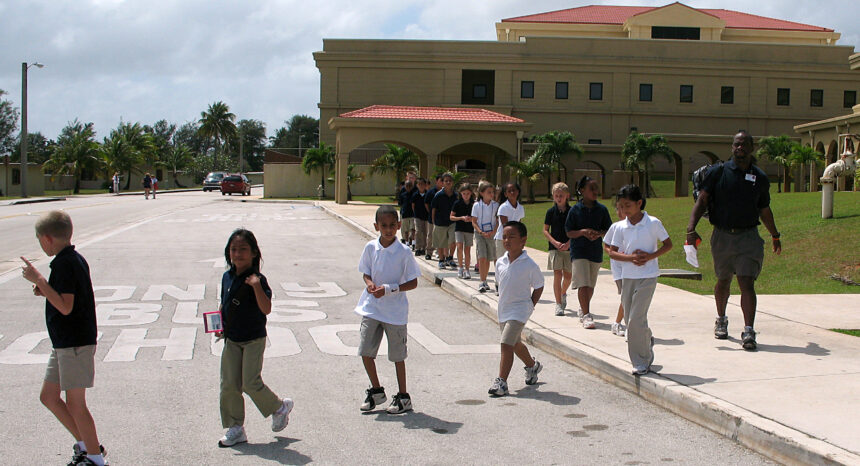
Republish this article

This work is licensed under a Creative Commons Attribution-NoDerivatives 4.0 International License .
by Denise-Marie Ordway, The Journalist's Resource April 20, 2018
This <a target="_blank" href="https://journalistsresource.org/education/school-uniforms-research-achievement/">article</a> first appeared on <a target="_blank" href="https://journalistsresource.org">The Journalist's Resource</a> and is republished here under a Creative Commons license.<img src="https://journalistsresource.org/wp-content/uploads/2020/11/cropped-jr-favicon-150x150.png" style="width:1em;height:1em;margin-left:10px;">
Decades ago, uniforms were mostly worn by students who went to private or parochial schools. But as local school boards have focused more on improving standardized test scores and campus safety, a growing number have begun requiring school uniforms — typically, a polo shirt of a particular color paired with navy or khaki pants, skirts or shorts. Nearly 22 percent of public schools in the United States required uniforms in 2015-16 — up from almost 12 percent in 1999-2000, according to the National Center for Education Statistics (NCES).
Proponents argue that students will pay more attention to their classwork if they aren’t preoccupied with fashion, and that they’ll be better behaved. Meanwhile, school administrators say uniforms help eliminate gang-related styles and logos. They also make it easier to spot a stranger on campus.
Despite their reported benefits, mandatory uniforms are controversial because a lot of parents and students don’t like the idea of forcing children to dress alike, which they say suppresses freedom of expression. Some families complain about the financial burden of purchasing uniforms in addition to their kids’ other clothing. Years ago, parents also complained that it was difficult to find uniforms, but that ceased to be an issue after large chain stores like Target and Wal-Mart began selling them.
As public schools debate the merits of uniforms — some school boards have been bouncing the idea around for years — it’s important for journalists to know what the research says on this topic. School officials do not always consult academic research before they put a plan on the table.
To help journalists ground their reporting and fact-check claims, Journalist’s Resource has rounded up several academic studies worth reviewing. Reporters may also want to examine reports on uniform use from the NCES, which collects and reports data related to school uniforms, dress codes and book bags in public schools.
——————————–
“School Discipline, School Uniforms and Academic Performance” Baumann, Chris; Krskova, Hana. International Journal of Educational Management , 2016. DOI: 10.1108/IJEM-09-2015-0118.
Summary: This study examines test scores and student behavior in the United States, Canada and 37 other countries to determine whether uniforms affect student discipline. The researchers found that the highest-performing students are the most disciplined. In addition, “for countries where students wear school uniforms, our study found that students listen significantly better, there are lower noise levels, and lower teaching waiting times with classes starting on time.”
“Dressed for Success? The Effect of School Uniforms on Student Achievement and Behavior” Gentile, Elizabetta; Imberman, Scott A. Journal of Urban Economics , 2012, Vol. 71. doi: 10.1016/j.jue.2011.10.002.
Abstract: “Uniform use in public schools is rising, but we know little about how they affect students. Using a unique dataset from a large urban school district in the southwest United States, we assess how uniforms affect behavior, achievement and other outcomes. Each school in the district determines adoption independently, providing variation over schools and time. By including student and school fixed-effects we find evidence that uniform adoption improves attendance in secondary grades, while in elementary schools they generate large increases in teacher retention.”
“Uniforms in the Middle School: Student Opinions, Discipline Data, and School Police Data” Sanchez, Jafeth E.; Yoxsimer, Andrew; Hill, George C. Journal of School Violence , 2012. DOI: 10.1080/15388220.2012.706873.
Summary: Researchers asked students at an urban middle school in Nevada what they thought of having to wear uniforms. Their public school had adopted a uniform policy after staff members became frustrated with the earlier dress code policy, which resulted in girls wearing revealing clothing and boys wearing shirts with inappropriate messages and images. The study’s main takeaway: The vast majority of students said they dislike uniforms, although some agreed there were benefits. “For example, in reference to gender, more than expected females than males indicated students treated them better with uniforms. Also, fewer females than males got detention for not wearing a uniform or for wearing a uniform inappropriately.”
“Are School Uniforms a Good Fit? Results from the ECLS-K and the NELS” Yeung, Ryan. Educational Policy , 2009, Vol. 23. doi: 10.1177/0895904808330170.
Abstract: “One of the most common proposals put forth for reform of the American system of education is to require school uniforms. Proponents argue that uniforms can make schools safer and also improve school attendance and increase student achievement. Opponents contend that uniforms have not been proven to work and may be an infringement on the freedom of speech of young people. Within an econometric framework, this study examines the effect of school uniforms on student achievement. It tackles methodological challenges through the use of a value-added functional form and the use of multiple data sets. The results do not suggest any significant association between school uniform policies and achievement. Although the results do not definitely support or reject either side of the uniform argument, they do strongly intimate that uniforms are not the solution to all of American education’s ills.”
“Effects of Student Uniforms on Attendance, Behavior Problems, Substance Use, and Academic Achievement” Brunsma, David L.; Rockquemore, Kerry A. The Journal of Educational Research , 1998, Vol. 92. doi: 10.1080/00220679809597575.
Abstract: “Mandatory uniform policies have been the focus of recent discourse on public school reform. Proponents of such reform measures emphasize the benefits of student uniforms on specific behavioral and academic outcomes. Tenth-grade data from The National Educational Longitudinal Study of 1988 was used to test empirically the claims made by uniform advocates. The findings indicate that student uniforms have no direct effect on substance use, behavioral problems, or attendance. Contrary to current discourse, the authors found a negative effect of uniforms on student academic achievement. Uniform policies may indirectly affect school environment and student outcomes by providing a visible and public symbol of commitment to school improvement and reform.”
“School Uniforms, Academic Achievement, and Uses of Research” Bodine, Ann. The Journal of Educational Research , 2003, Vol. 97. doi: 10.1080/00220670309597509.
Abstract: “School uniforms are being advocated for a range of social, educational, economic, and familial reasons. In 1998, The Journal of Educational Research (The JER) published an article by D. Brunsma and K. Rockquemore that claims that uniforms correlate negatively with academic achievement, but data presented in this article actually show positive correlation between uniforms and achievement for the total sample, and for all but 1 school sector. Examination of structure of argument reveals that the erroneous claim results from misleading use of sector analysis. Simultaneous with The JER article, and on the basis of the same National Education Longitudinal Study: 1988 database, an Educational Testing Service article reported that no correlation exists between uniforms and achievement. The two articles are contrasted in this study. The effect of new communication technology in amplifying political uses of academic research is discussed.”
“Public School Uniforms: Effect on Perceptions of Gang Presence, School Climate, and Student Self-Perceptions” Wade, Kathleen Kiley; Stafford, Mary E. Education and Urban Society , 2003, Vol. 35. doi: 10.1177/0013124503255002.
Abstract: “This study attempts to clarify the relationships between public school uniforms and some of their intended results: student self-worth and student and staff perceptions of gang presence and school climate. The instruments used in the study included a questionnaire on gang presence and identity, the National Association of School Principals Comprehensive Assessment of School Environments, and the Harter Self-Perception Profile for Children. Participants consisted of 415 urban public middle school students and 83 teachers. Findings indicate that, although perceptions did not vary for students across uniform policy, teachers from schools with uniform policies perceived lower levels of gang presence. Although the effect size was small, students from schools without uniforms reported higher self-perception scores than students from schools with uniform policies. Student and teacher perceptions of school climate did not vary across uniform policy.”
“The Effect of Uniforms on Nonuniform Apparel Expenditures” Norum, Pamela S.; Weagley, Robert O.; Norton, Marjorie J. Family & Consumer Sciences , 1998. doi: 10.1177/1077727X980263001.
Abstract: “The uniform industry has grown steadily the past 20 years with increased attention from employers trying to create a professional image among workers as well as school administrators considering uniforms to curtail school violence. Although an important part of human dress for centuries, uniforms have received little attention from researchers of the clothing market. This study examines the impact of uniform purchases on household expenditures for selected nonuniform apparel subcategories based on an economic model of conditional demand. Expenditure equations are estimated using the 1990-1991 Consumer Expenditure Survey. The results suggest that, on average, consumers do not substitute uniforms for other apparel purchases. Rather, uniforms and nonuniform apparel appear to be complements in consumers’ purchases, resulting in greater household expenditures on nonuniform apparel. These results are a first step in understanding the economic effect that uniform purchases, mandated by employers, schools, or others, have on household clothing expenditures.”
Looking for more research on student achievement? Check out our write-ups on how teacher salaries , school vouchers and school shootings impact learning.
About The Author
Denise-Marie Ordway
- SUGGESTED TOPICS
- The Magazine
- Newsletters
- Managing Yourself
- Managing Teams
- Work-life Balance
- The Big Idea
- Data & Visuals
- Reading Lists
- Case Selections
- HBR Learning
- Topic Feeds
- Account Settings
- Email Preferences
Share Podcast

Lessons from Amazon’s Early Growth Strategy
If you’re interested in strategies for scaling start-ups, this episode is for you.
- Apple Podcasts
So much has been written about Amazon’s outsized growth. But Harvard Business School professor Sunil Gupta says it’s the company’s unusual approach to strategy that has captured his scholarly attention. Gupta has spent years studying Amazon’s strategy and its founder and former CEO Jeff Bezos.
In this episode, Gupta shares how Amazon upended traditional corporate strategy by diversifying into multiple products serving many end users, instead of having a narrow focus.
He argues that some of Amazon’s simplest business strategies — like their obsession with customers and insistence on long-term thinking — are approaches that companies, big and small, can emulate.
Key episode topics include: strategy, innovation, leadership, scaling, Jeff Bezos, long-term thinking, customer focus.
HBR On Strategy curates the best case studies and conversations with the world’s top business and management experts, to help you unlock new ways of doing business. New episodes every week.
- Listen to the full HBR IdeaCast episode: How Jeff Bezos Built One of the World’s Most Valuable Companies (2020)
- Find more episodes of HBR IdeaCast
- Discover 100 years of Harvard Business Review articles, case studies, podcasts, and more at HBR.org .
HANNAH BATES: Welcome to HBR On Strategy , case studies and conversations with the world’s top business and management experts, hand-selected to help you unlock new ways of doing business.
So much has been written about Amazon’s outsized growth. But Harvard Business School professor Sunil Gupta says it’s the company’s unusual approach to strategy that has captured his scholarly attention.
Gupta has spent years studying Amazon’s strategy and its founder and former CEO, Jeff Bezos.
In this episode, Gupta shares how Amazon upended traditional corporate strategy by diversifying into multiple products serving many end users instead of focusing more narrowly.
And he argues that some of their simplest business strategies – like their obsession with the customer and insistence on long-term thinking – are approaches that companies, big and small, should emulate.
If you’re interested in innovation strategy, this episode is for you. It originally aired on HBR IdeaCast in November 2020. Here it is.
ALISON BEARD: Welcome to the HBR IdeaCast from Harvard Business Review. I’m Alison Beard.
If you had to name the most successful business leader alive today, who would you say? I can’t hear you from my basement podcasting room, but I would bet that for many of you, the answer is Jeff Bezos, CEO of Amazon. This is a man who over the past 25 years turned his online bookstore startup into a diversified company currently valued at $1.6 trillion.
Amazon is a digital retailing juggernaut, it’s also a web services provider, media producer, and manufacturer of personal technology devices like Kindle and Echo. Oh, and Bezos also owns the Washington Post and Blue Origin, a space exploration company. Forbes tells us he is the richest person in the world.
How did he accomplish so much? How did he change the business landscape? What mistakes has he made along the way? A new collection of Bezos’s own writing, which full disclosure, my colleagues at Harvard Business Review Press have published, offer some insights. Here’s a clip from one speech that’s included. The book is called Invent and Wander.
And our guest today, who has spent years studying both Amazon and Bezos, is here to talk with me about some of the key themes in it, including the broad drivers of both the company and the CEO’s success. Sunil Gupta is a professor of business administration at Harvard Business School and cochair of its executive program, and cochair of its executive program on driving digital strategy, which is also the title of his book. Sunil, thanks so much for being on the show.
SUNIL GUPTA: Thank you for having me, Alison.
ALISON BEARD: So Invent and Wander. I get that Bezos is inventive. You know, he created a new way for us to buy things – everything. How is he also a wonderer?
SUNIL GUPTA: So he’s full of experiments. His company and his whole style is known for experimentation, and he says that in so many words that if you want big winners, then you have to be willing to have many failures. And the argument is, one big winner will take care of a thousand failed experiments. So I think that’s the wandering part. But also his experiments are not aimless. There is a certain thought and process behind what experiments to do and why they will connect to the old, old picture of what Amazon is today.
ALISON BEARD: And your expertise is in digital strategy. How does he break the traditional rules of strategy?
SUNIL GUPTA: So for the longest time the way, at least I was taught in my MBA program and the way we teach to our MBA students and executives, is strategy is about focus. But if you look at Amazon, Amazon certainly doesn’t look like it’s focusing on anything, so obviously Jeff Bezos missed that class, otherwise it’s a very, very different thing.
And then you’d say, why is it that so called lack of focus strategy seems to be working for Amazon? And I think the fundamental underlying principle that he’s guiding his whole discussion of strategy is, he’s changed the rules of strategy. So the old rules of strategy were, the way you gained competitive advantage is by being better or cheaper. So if I am selling you a car, my car is better of cheaper. But the inherent assumption in that strategy statement is, I’m selling one product to one customer. And what Amazon is basically arguing is, the digital economy is all about connection. We have got to connect products and connect customers. Let me explain why that is so powerful.
So connecting products, here the idea is, I can sell you, this is a classic razor and blade strategy. I can sell you a razor cheap in order to make money on the blade. So I can sell you Kindle cheap in order to make money on the ebooks. Now, at some level you might say, hey, razor and blade have been around forever. What’s so unique today? I think unique today is razor could be in one industry and blades could be in completely different industrys.
So for example, if you look at Amazon’s portfolio of businesses, you sort of say, not only Amazon is an e-commerce player, but also is making movies and TV shows, its own studio. Well, why does it make sense for an e-commerce player, an online retailer to compete with Hollywood. Well, Walmart doesn’t make movies. Macy’s doesn’t make movies? So why does it make sense for Amazon to make movies?
And I think once you dig into it, the answer becomes clear that the purpose of the movies is to keep and gain the Prime customers. Two day free shipping is fine, but if you ask me to pay $99 or $119 for two day free shipping, I might start doing the math in my head, and say, OK, how many packages do I expect to get next year? And is the Prime membership worth it or not?
But once you throw in, in addition to the two-day free shipping, you throw in some TV shows and movies that are uniquely found only on Amazon, I can’t do this math. And why is Prime customers important to Amazon? Because Prime customers are more loyal. They buy three or four times more than the non-Prime customers, and they’re also less price sensitive.
And in fact, Jeff Bezos has said publicly that every time we win a Golden Globe Award for one of our shows, we sell more shoes. So this is, and he said it in your book, Invent and Wander, also, that we might be the only company in the world which has figured out how winning Golden Globe Awards can actually translate into selling more products on the online commerce.
So this is a great example of the razor being in a very different industry and blade being in another industry. Take another example. Amazon has a lending business where they give loans to small and medium enterprises. If Amazon decides to compete with banks tomorrow, Amazon can decide to offer loans to the small merchants at such a low price that banks would never be able to compete. And why would Amazon be able to do that? Because Amazon can say, hey, I’m not going to make money on loans, as much money on loans, but I’ll make more money when these businesses, small businesses grow and do more transactions on my marketplace platform. And I get more commissions. So again, loan can become my razor in order to help the merchants grow and make money on the transaction and the commission that I get from that. The moment I make somebody else’s, in this case the banks, core business my razor, they will make a very hard time competing. So I think that’s the key change, the fundamental rules of strategy and competition in that direction.
The second part of connection is connecting customers, and this is the classic network effect. So marketplace is a great example of network effects. The more buyers I have, the more sellers I have. The more sellers I have, the sellers I have, the more buyers I get, because the buyers can find all the items. And that becomes flywheel effect, and it becomes a situation where it’s very hard for a new player to complete with Amazon.
ALISON BEARD: In this diversification that Amazon has done, how have they managed to be good at all of those things? Because they’re not focused. You know, they’re not concentrated on an area of specific expertise. So how have they succeeded when other companies might have failed because they lacked that expertise, or they were spreading themselves too thin?
SUNIL GUPTA: So I think it depends on how you define focus. Most of us, when we define focus, we sort of define focus by traditional industry boundaries, that I’m an online retailer, therefore going into some other business is lack of focus. The way Amazon thinks about is focus on capabilities.
So if you look at it from that point of view, I would argue that Amazon had three fundamental core capabilities. Number one, it’s highly customer focused, not only in its culture, but also in its capability in terms of how it can actually handle data and leverage data to get customer insight. The second core capability of Amazon is logistics. So it’s now a world class logistics player. It uses really frontier technology, whether it’s key word, robotics, computer vision, in its warehouse to make it much more efficient.
And the third part of Amazon’s skill or the capability is its technology. And a good example of that is Amazon Web Services, or AWS. And I think if you look at these three core capabilities, customer focus and the data insight that it gets from that, the logistics capability, and the technology, everything that Amazon is doing is some way or the other connected to it. In that sense, Amazon, and there’s no lack of focus, in my judgment on Amazon.
Now, if he starts doing, starts making cream cheese tomorrow or starts making airplane engines, then I would say, yes, it’s got a lack of focus. But one of the other things that Jeff Bezos has said again and again is this notion of work backwards and scale forward. And what that means is, because you’re customer obsessed, you sort of find ways to satisfy customers, and if that means developing new skills that we don’t have because we are working backwards from what the customer needs are, then we’ll build those skills.
So a good example of that is, when Amazon started building Kindle, Amazon was never in the hardware business. It didn’t know how to build hardware. But Bezos realized that as the industry moved, people are beginning to read more and more online, rather, or at least on their devices, rather than the physical paper copy of a book. So as a result, he says, how do we make it easier for consumers to read it on an electronic version? And they’re spending three years learning about this capability of hardware manufacturing. And by the way, Kindle came out long before iPad came out. And of course, that capability now has helped them launch Echo and many other devices.
ALISON BEARD: Right. So it’s the focus on the customer, plus a willingness to go outside your comfort zone, the wander part.
SUNIL GUPTA: Exactly.
ALISON BEARD: Yeah. How would you describe Bezos’s leadership style?
SUNIL GUPTA: So I think there are at least three parts to it. One is, he said right from day one that he wants to be a long-term focus. The second thing is being customer obsessed. And many times he has said that he can imagine, in the meetings he wants people to imagine an empty chair. That is basically for the customer. And he says, we are not competitor focused. We are not product focused. We are not technology focused. We are customer focused. And the third is, willingness to experiment. And fail, and build that culture in the company that it’s OK to fail.
ALISON BEARD: What about personally, though? Is he a hard charger? Is he an active listener? What’s it like to be in a room with him?
SUNIL GUPTA: Oh, he’s certainly a hard charger. I mean, he’s also the kind of guy, when he hires people, he says, you can work long, hard, or smart. But at Amazon, you can choose two out of three. And I think this is similar to many other leaders. If you look at Steve Jobs, he was also a very hard charging guy. And I think some people find it exhilarating to work with these kind of leaders. Some find it very tough.
ALISON BEARD: Do you think that he communicates differently from other successful CEOs?
SUNIL GUPTA: So the communication style that he has built in the company is the very famous now, there’s no PowerPoints. So it’s a very thoughtful discussion. You write six-page memos, which everybody, when their meeting starts, everybody sits down and actually reads the memo.
In fact, this was a very interesting experience that I had. One of my students, who was in the executive program, works at Amazon in Germany. And he is, he was at that point in time thinking of moving to another company and becoming a CEO of that company. So he said, can I talk to you about this change of career path that I’m thinking about? I said, sure. So we set up a time, and five minutes before our call, he sends me an email with a six-page memo. And I said, well, shouldn’t he have sent this to me before, so I could at least look at it? He says, no, that’s the Amazon style. We’ll sit in silence and read it together. And so I read it together, because then you’re completely focused on it. And then we can have a conversation. But this discipline of writing a six-page memo, it’s a very, very unique experience, because you actually have to think through all your arguments.
ALISON BEARD: You also mentioned the long term focus, and that really stood out for me, too, this idea that he is not at all thinking of next year. He’s thinking five years out, and sometimes even further. But as a public company, how has Amazon been able to stick to that? And is it replicable at other companies?
SUNIL GUPTA: I think it is replicable. It requires conviction, and it requires a way to articulate the vision to Wall Street that they can rally behind. And it’s completely replicable. There are other examples of companies who have followed a similar strategy. I mean, Netflix is a good example. Netflix hadn’t made money for a long period of time. But they sold the vision of what the future will look like, and Wall Street bought that vision.
Mastercard is exactly the same thing. Ajay Banga is giving three year guidance to Wall Street saying, this is my three-year plan, because things can change quarter to quarter. I’m still responsible to tell you what we are doing this quarter, but my strategy will not be guided by what happens today. It will be guided by the three-year plan that we have.
ALISON BEARD: There are so many companies now that go public without turning any profit, whereas Amazon now is printing money, and thus able to reinvest and have this grand vision. So at what point was Bezos able to say, right, we’re going to do it my way?
SUNIL GUPTA: I think he said it right from day one, except that people probably didn’t believe it. And in fact, one of the great examples of that was, when he was convinced about AWS, the Amazon Web Services, that was back in the early 2000s, when a majority of the Wall Street was not sure what Jeff Bezos was trying to do, because they say, hey, you are an online retailer. You have no business being in web services. That’s the business of IBM. And that’s a B2B business. You’re in a B2C business. Why are you going in there?
And Bezos said, well, we have plenty of practice of being misunderstood. And we will continue with our passion and vision, because we see the path. And now he’s proven it again and again why his vision is correct, and I think that could give us more faith and conviction to the Wall Street investors.
SUNIL GUPTA: Oh, absolutely. And he’s one of the persons who has his opinion, and you always surround yourself with people better than you.
ALISON BEARD: How has he managed to attract that talent when it is so fiercely competitive between Google, Facebook, all of these U.S. technology leaders?
SUNIL GUPTA: So a couple of things I would say. First of all, it’s always good fun to join a winning team. And all of us want to join a winning team, so this certainly is on a trajectory which is phenomenal. It’s like a rocket ship that is taking off and has been taking off for the last 25 years. So I think that’s certainly attractive to many people, and certainly many hard charging people who want to be on a winning team.
And a second thing is, Amazon’s culture of experimentation and innovation. That is energizing to a lot of people. It’s not a bureaucracy where you get bogged down by the processes. So the two type of decisions that we talked about, he gives you enough leeway to try different things, and is willing to invest hundreds of millions of dollars into things that may or may not succeed in the future. And I think that’s very liberating to people who are willing to take on the ownership and build something.
ALISON BEARD: But don’t all of the tech companies offer that?
SUNIL GUPTA: They do, but if you think about many other tech companies, they’re much more narrow in focus. So Facebook is primarily in social media. Google is primarily in search advertising. Yes, you have GoogleX, but that’s still a small part of what Google does. Whereas if you ask yourself what business is Amazon in, there are much broader expansive areas that Amazon has gone into. So I think the limits, I mean, Amazon does not have that many limits or boundaries as compared to many other businesses in Silicon Valley.
ALISON BEARD: So let’s talk a little bit about Bezos’s acquisition strategy. I think the most prominent is probably Whole Foods, but there are many others. How does he think about the companies that he wants to bring in as opposed to grow organically?
SUNIL GUPTA: So some acquisitions are areas where he thinks that he can actually benefit and accelerate the vision that he already has. So for example, the acquisition of Kiva was to improve the efficiency and effectiveness of the systems that he already put in place in his warehouse. And logistics and warehouse is a key component or key part of Amazon’s business, and he saw that Kiva already was ahead of the curve in technology that he probably wanted to have that in his own company. So that was obvious acquisition, because that fits in the existing business.
Whole Foods is kind of a slightly different story, in my judgment, because I some ways, you can argue, why is Amazon, an online player, buying an offline retail store, Whole Foods? And in fact, they bought it at 27% premium. So that doesn’t make sense for an online retailer commerce to go to offline channels. And I think, in fact, part of the reason in my judgment is, it’s not just Whole Foods, but it’s about the food business, per se. And why is Amazon so interested in food? In fact, Amazon has been trying this food business, online food delivery for a long period of time without much success. And Whole Foods was one, another way to try and get access to that particular business. And why is that so important to Amazon, even though you could argue, food is a low margin business?
And I would say, part of the reason is, food is something, grocery is something that you buy every week, perhaps twice a week. And if I, as Amazon, can convince you to buy grocery online from Amazon, then I’m creating a habit for you to come onto Amazon every week, perhaps twice a week. And once you are on Amazon, you will end up buying other products on Amazon. Whereas if you are buying electronics, you may not come to Amazon every day.
So this is a habit creation activity, and again, it may not be a very high margin activity to sell you food. But I’ve created a habit, just like Prime. I’ve created a loyal customer where you think of nothing else but Amazon for your daily needs, and therefore you end up buying other things.
ALISON BEARD: And Amazon isn’t without controversy. You know, and we should talk about that, too. First, there are questions about its treatment of warehouse employees, particularly during COVID. And Bezos, as you said, has always been relentlessly focused on the customer. But is Amazon employee centric, too?
SUNIL GUPTA: So I think there is definitely some areas of concern, and you rightly said there is a significant concern about the, during the COVID, workers were complaining about safety, the right kind of equipment. But even before COVID, there were a lot of concerns about whether the workers are being pushed too hard. They barely have any breaks. And they’re constantly on the go, because speed and efficiency become that much more important to make sure customers always get what they are promised. And in fact, more than promised.
Clearly Amazon either hasn’t done a good job, or hasn’t at least done the public relations part of it that they have done a good job. Now, if you ask Jeff Bezos, he will claim that, no, actually, they have done things. For example, they offer something called carrier choice, where they give 95% tuition to the employees to learn new skills, whether they’re relevant to Amazon or not. Pretty much like what Starbucks does for its baristas, for college education and other things. But I think more than just giving money or tuition, it requires a bit of empathy and sense that you care for your employees, and perhaps that needs, that’s something that Amazon needs to work on.
ALISON BEARD: And another challenge is the criticism that it has decimated mom and pop shops. Even when someone sells through Amazon, the company will then see that it’s a popular category and create it itself and start selling it itself. There’s environmental concerns about the fact that packages are being driven from warehouses to front doors all over America. And boxes and packaging. So how has Bezos, how has the company dealt with all of that criticism?
SUNIL GUPTA: They haven’t. And I think those are absolutely valid concerns on both counts, that the small sellers who grow to become reasonably big are always under the radar, and there are certainly anecdotal evidence there, small sellers have complained that Amazon had decided to sell exactly the same item that they were so successful in selling, and becoming too big is actually not good on Amazon, because Amazon can get into your business and wipe you away. So that’s certainly a big concern, and I think that’s something that needs to be sorted out, and Amazon needs to clarify what its position on that area is, because it benefits from these small sellers on his platform.
And your second question about environmental issues is also absolutely on the money, because not only emission issues, but there’s so many boxes that pile in, certainly in my basement, from Amazon. You sort of say, and it’s actually ironical that Millennials who are in love with Amazon are extremely environmentally friendly. But at the same time, they would not hesitate to order something from Amazon and pile up all these boxes. So I think Amazon needs to figure out a way to think about both those issues.
ALISON BEARD: And at what point will it have to? I mean, it seems to be rolling happily along.
SUNIL GUPTA: Well, I think those issues are becoming bigger and bigger, and it’s certainly in the eye of the regulators, also, for some of these practices. And not only because it’s too big, and there might be monopoly concerns, but these issues will become larger, and any time you become a large company, you become the center of attraction for broader issues than just providing shareholder value.
ALISON BEARD: Yeah. So those are weaknesses possibly for the company. What are some of Bezos’s personal weaknesses that you’ve seen in studying him and the company?
SUNIL GUPTA: So I think one thing that stands out to me, and at least in the public forums, I have not seen any empathy. And it’s, I mean, we talk about that the leaders have, should have three qualities. They should be competent. They should have a good character. And they should have compassion. So he’s certainly very competent. I mean, he’s brilliant in many aspects, right, from the computer vision and AI and machine learning, to the nuances of data analytics, to the Hollywood production, etc. He also seems to have good character, at least I have not heard any personal scandals, apart from his other issues in his personal life, perhaps.
Those characteristics of competence and character make people respect you. What makes people love you is when you show compassion, and at least I haven’t seen compassion or empathy that comes out of him. I mean, he certainly comes across as a very hard charging, driven person, which probably is good for business. But the question of empathy is perhaps something lacking right now.
ALISON BEARD: Yeah. The other issue is his just enormous wealth. He did invent this colossally valuable company, but should anyone really be that rich?
SUNIL GUPTA: Well, I guess that’s, you can say that’s the good or the bad thing about capitalism. But I think, and again, my personal view is there’s nothing wrong in becoming rich, if you have been successful and done it with hard work and ingenuity. But how you use your wealth is something that perhaps will define Jeff Bezos going forward. I think Bill Gates is a great example how he actually has used his wealth and his influence and his expertise and his brilliance into some certain thing that actually is great for humanity.
Now, whether Jeff Bezos does that down the road, I don’t know, whether his space exploration provides that sort of outlet which is both his passion as well as good for humanity, I don’t know. But at some point in time, I think it’s the responsibility of these leaders to sort of say, my goal is not simply to make money and make my shareholders rich, but also help humanity and help society.
ALISON BEARD: If you’re talking to someone who’s running a startup, or even a manager of a team at a traditional company, what is the key lesson that you would say, this is what you can learn from Jeff Bezos? This is what you can put to work in your own profession?
SUNIL GUPTA: So I would say two things that at least I would take away if I were doing a startup. One is customer obsession. Now, every company says that, but honestly, not every company does it, because if you go to the management meetings, if you go to the quarterly meetings, you suddenly go focus on financials and competition and product. But there’s rarely any conversation on customers. And I think, as I mentioned earlier, that Jeff Bezos always tells his employee to think of the imaginary chair in which a customer is sitting, because that’s the person that we need to focus on. Howard Shultz does the same thing at Starbucks, and that’s why Starbucks is so customer focused.
So I think that’s the first part. And the argument that Bezos gives is, customers are never satisfied. And that pushes us to innovate and move forward, so we need to innovate even before the rest of the world even sees that, because customers are the first ones to see what is missing in the offering that you have.
And the second I would say that I would take away from Jeff Bezos is the conviction and passion with what you do. And many times that goes against the conventional wisdom. And the Amazon Web Services is a great example of that. The whole world, including the Wall Street Journal and the Wall Street analysts were saying, this is none of Amazon’s business to do web services. But he was convinced that this is the right thing to do, and he went and did that.
And part of that conviction may come from experiments. Part of that conviction comes from connecting the dots that he could see that many other people didn’t see. I mean, that’s why he went, left his job, and went to Seattle to do the online bookstore, because he could see the macro trends as to what the Internet is likely to do. So, I think that’s the vision that he had. And once you have the conviction, then you follow your passion.
ALISON BEARD: Sunil, thanks so much for coming on the show.
SUNIL GUPTA: Thank you for having me. Alison.
HANNAH BATES: That was Harvard Business School professor Sunil Gupta, in conversation with Alison Beard on the HBR IdeaCast .
We’ll be back next Wednesday with another hand-picked conversation about business strategy from Harvard Business Review. If you found this episode helpful, share it with your friends and colleagues, and follow our show on Apple Podcasts, Spotify, or wherever you get your podcasts. While you’re there, be sure to leave us a review.
And when you’re ready for more podcasts, articles, case studies, books, and videos with the world’s top business and management experts, find it all at HBR.org.
This episode was produced by Mary Dooe, Anne Saini, and me, Hannah Bates. Ian Fox is our editor. And special thanks to Maureen Hoch, Nicole Smith, Erica Truxler, Ramsey Khabbaz, Anne Bartholomew, and you – our listener. See you next week.
- Subscribe On:
Latest in this series
This article is about strategy, partner center.
30 Best universities for Mechanical Engineering in Moscow, Russia
Updated: February 29, 2024
- Art & Design
- Computer Science
- Engineering
- Environmental Science
- Liberal Arts & Social Sciences
- Mathematics
Below is a list of best universities in Moscow ranked based on their research performance in Mechanical Engineering. A graph of 269K citations received by 45.8K academic papers made by 30 universities in Moscow was used to calculate publications' ratings, which then were adjusted for release dates and added to final scores.
We don't distinguish between undergraduate and graduate programs nor do we adjust for current majors offered. You can find information about granted degrees on a university page but always double-check with the university website.
1. Moscow State University
For Mechanical Engineering

2. Bauman Moscow State Technical University

3. National Research University Higher School of Economics

4. Moscow Aviation Institute

5. N.R.U. Moscow Power Engineering Institute
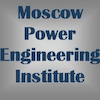
6. National Research Nuclear University MEPI

7. National University of Science and Technology "MISIS"
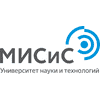
8. Moscow Institute of Physics and Technology

9. Moscow State Technological University "Stankin"

10. RUDN University

11. Moscow Polytech

12. Moscow State University of Railway Engineering

13. Finance Academy under the Government of the Russian Federation

14. Moscow Medical Academy

15. Russian State University of Oil and Gas
16. mendeleev university of chemical technology of russia.

17. Russian National Research Medical University

18. Plekhanov Russian University of Economics
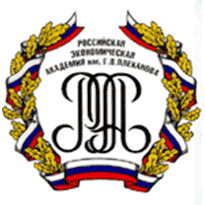
19. National Research University of Electronic Technology

20. Moscow State Pedagogical University
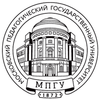

21. Russian Presidential Academy of National Economy and Public Administration
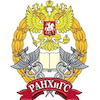
22. State University of Management

23. Moscow State Institute of International Relations

24. Russian State Geological Prospecting University
25. russian state agricultural university.
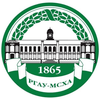
26. New Economic School
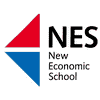
27. Moscow State Technical University of Civil Aviation

28. Russian State University for the Humanities

29. Russian State Social University
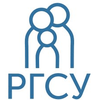
30. Moscow State Linguistic University
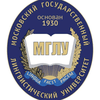
Universities for Mechanical Engineering near Moscow
Engineering subfields in moscow.

40 Facts About Elektrostal
Written by Lanette Mayes
Modified & Updated: 02 Mar 2024
Reviewed by Jessica Corbett

Elektrostal is a vibrant city located in the Moscow Oblast region of Russia. With a rich history, stunning architecture, and a thriving community, Elektrostal is a city that has much to offer. Whether you are a history buff, nature enthusiast, or simply curious about different cultures, Elektrostal is sure to captivate you.
This article will provide you with 40 fascinating facts about Elektrostal, giving you a better understanding of why this city is worth exploring. From its origins as an industrial hub to its modern-day charm, we will delve into the various aspects that make Elektrostal a unique and must-visit destination.
So, join us as we uncover the hidden treasures of Elektrostal and discover what makes this city a true gem in the heart of Russia.
Key Takeaways:
- Elektrostal, known as the “Motor City of Russia,” is a vibrant and growing city with a rich industrial history, offering diverse cultural experiences and a strong commitment to environmental sustainability.
- With its convenient location near Moscow, Elektrostal provides a picturesque landscape, vibrant nightlife, and a range of recreational activities, making it an ideal destination for residents and visitors alike.
Known as the “Motor City of Russia.”
Elektrostal, a city located in the Moscow Oblast region of Russia, earned the nickname “Motor City” due to its significant involvement in the automotive industry.
Home to the Elektrostal Metallurgical Plant.
Elektrostal is renowned for its metallurgical plant, which has been producing high-quality steel and alloys since its establishment in 1916.
Boasts a rich industrial heritage.
Elektrostal has a long history of industrial development, contributing to the growth and progress of the region.
Founded in 1916.
The city of Elektrostal was founded in 1916 as a result of the construction of the Elektrostal Metallurgical Plant.
Located approximately 50 kilometers east of Moscow.
Elektrostal is situated in close proximity to the Russian capital, making it easily accessible for both residents and visitors.
Known for its vibrant cultural scene.
Elektrostal is home to several cultural institutions, including museums, theaters, and art galleries that showcase the city’s rich artistic heritage.
A popular destination for nature lovers.
Surrounded by picturesque landscapes and forests, Elektrostal offers ample opportunities for outdoor activities such as hiking, camping, and birdwatching.
Hosts the annual Elektrostal City Day celebrations.
Every year, Elektrostal organizes festive events and activities to celebrate its founding, bringing together residents and visitors in a spirit of unity and joy.
Has a population of approximately 160,000 people.
Elektrostal is home to a diverse and vibrant community of around 160,000 residents, contributing to its dynamic atmosphere.
Boasts excellent education facilities.
The city is known for its well-established educational institutions, providing quality education to students of all ages.
A center for scientific research and innovation.
Elektrostal serves as an important hub for scientific research, particularly in the fields of metallurgy, materials science, and engineering.
Surrounded by picturesque lakes.
The city is blessed with numerous beautiful lakes, offering scenic views and recreational opportunities for locals and visitors alike.
Well-connected transportation system.
Elektrostal benefits from an efficient transportation network, including highways, railways, and public transportation options, ensuring convenient travel within and beyond the city.
Famous for its traditional Russian cuisine.
Food enthusiasts can indulge in authentic Russian dishes at numerous restaurants and cafes scattered throughout Elektrostal.
Home to notable architectural landmarks.
Elektrostal boasts impressive architecture, including the Church of the Transfiguration of the Lord and the Elektrostal Palace of Culture.
Offers a wide range of recreational facilities.
Residents and visitors can enjoy various recreational activities, such as sports complexes, swimming pools, and fitness centers, enhancing the overall quality of life.
Provides a high standard of healthcare.
Elektrostal is equipped with modern medical facilities, ensuring residents have access to quality healthcare services.
Home to the Elektrostal History Museum.
The Elektrostal History Museum showcases the city’s fascinating past through exhibitions and displays.
A hub for sports enthusiasts.
Elektrostal is passionate about sports, with numerous stadiums, arenas, and sports clubs offering opportunities for athletes and spectators.
Celebrates diverse cultural festivals.
Throughout the year, Elektrostal hosts a variety of cultural festivals, celebrating different ethnicities, traditions, and art forms.
Electric power played a significant role in its early development.
Elektrostal owes its name and initial growth to the establishment of electric power stations and the utilization of electricity in the industrial sector.
Boasts a thriving economy.
The city’s strong industrial base, coupled with its strategic location near Moscow, has contributed to Elektrostal’s prosperous economic status.
Houses the Elektrostal Drama Theater.
The Elektrostal Drama Theater is a cultural centerpiece, attracting theater enthusiasts from far and wide.
Popular destination for winter sports.
Elektrostal’s proximity to ski resorts and winter sport facilities makes it a favorite destination for skiing, snowboarding, and other winter activities.
Promotes environmental sustainability.
Elektrostal prioritizes environmental protection and sustainability, implementing initiatives to reduce pollution and preserve natural resources.
Home to renowned educational institutions.
Elektrostal is known for its prestigious schools and universities, offering a wide range of academic programs to students.
Committed to cultural preservation.
The city values its cultural heritage and takes active steps to preserve and promote traditional customs, crafts, and arts.
Hosts an annual International Film Festival.
The Elektrostal International Film Festival attracts filmmakers and cinema enthusiasts from around the world, showcasing a diverse range of films.
Encourages entrepreneurship and innovation.
Elektrostal supports aspiring entrepreneurs and fosters a culture of innovation, providing opportunities for startups and business development.
Offers a range of housing options.
Elektrostal provides diverse housing options, including apartments, houses, and residential complexes, catering to different lifestyles and budgets.
Home to notable sports teams.
Elektrostal is proud of its sports legacy, with several successful sports teams competing at regional and national levels.
Boasts a vibrant nightlife scene.
Residents and visitors can enjoy a lively nightlife in Elektrostal, with numerous bars, clubs, and entertainment venues.
Promotes cultural exchange and international relations.
Elektrostal actively engages in international partnerships, cultural exchanges, and diplomatic collaborations to foster global connections.
Surrounded by beautiful nature reserves.
Nearby nature reserves, such as the Barybino Forest and Luchinskoye Lake, offer opportunities for nature enthusiasts to explore and appreciate the region’s biodiversity.
Commemorates historical events.
The city pays tribute to significant historical events through memorials, monuments, and exhibitions, ensuring the preservation of collective memory.
Promotes sports and youth development.
Elektrostal invests in sports infrastructure and programs to encourage youth participation, health, and physical fitness.
Hosts annual cultural and artistic festivals.
Throughout the year, Elektrostal celebrates its cultural diversity through festivals dedicated to music, dance, art, and theater.
Provides a picturesque landscape for photography enthusiasts.
The city’s scenic beauty, architectural landmarks, and natural surroundings make it a paradise for photographers.
Connects to Moscow via a direct train line.
The convenient train connection between Elektrostal and Moscow makes commuting between the two cities effortless.
A city with a bright future.
Elektrostal continues to grow and develop, aiming to become a model city in terms of infrastructure, sustainability, and quality of life for its residents.
In conclusion, Elektrostal is a fascinating city with a rich history and a vibrant present. From its origins as a center of steel production to its modern-day status as a hub for education and industry, Elektrostal has plenty to offer both residents and visitors. With its beautiful parks, cultural attractions, and proximity to Moscow, there is no shortage of things to see and do in this dynamic city. Whether you’re interested in exploring its historical landmarks, enjoying outdoor activities, or immersing yourself in the local culture, Elektrostal has something for everyone. So, next time you find yourself in the Moscow region, don’t miss the opportunity to discover the hidden gems of Elektrostal.
Q: What is the population of Elektrostal?
A: As of the latest data, the population of Elektrostal is approximately XXXX.
Q: How far is Elektrostal from Moscow?
A: Elektrostal is located approximately XX kilometers away from Moscow.
Q: Are there any famous landmarks in Elektrostal?
A: Yes, Elektrostal is home to several notable landmarks, including XXXX and XXXX.
Q: What industries are prominent in Elektrostal?
A: Elektrostal is known for its steel production industry and is also a center for engineering and manufacturing.
Q: Are there any universities or educational institutions in Elektrostal?
A: Yes, Elektrostal is home to XXXX University and several other educational institutions.
Q: What are some popular outdoor activities in Elektrostal?
A: Elektrostal offers several outdoor activities, such as hiking, cycling, and picnicking in its beautiful parks.
Q: Is Elektrostal well-connected in terms of transportation?
A: Yes, Elektrostal has good transportation links, including trains and buses, making it easily accessible from nearby cities.
Q: Are there any annual events or festivals in Elektrostal?
A: Yes, Elektrostal hosts various events and festivals throughout the year, including XXXX and XXXX.
Was this page helpful?
Our commitment to delivering trustworthy and engaging content is at the heart of what we do. Each fact on our site is contributed by real users like you, bringing a wealth of diverse insights and information. To ensure the highest standards of accuracy and reliability, our dedicated editors meticulously review each submission. This process guarantees that the facts we share are not only fascinating but also credible. Trust in our commitment to quality and authenticity as you explore and learn with us.
Share this Fact:
Study of modified VVER and typical PWR fuel in the HBWR reactor (Norway)
- Published: 21 December 2012
- Volume 113 , pages 171–178, ( 2013 )
Cite this article

- B. Yu. Volkov 1 ,
- W. Wiesenack 1 ,
- V. V. Yakovlev 2 ,
- E. P. Ryazantsev 2 ,
- A. K. Panyushkin 3 ,
- A. V. Ivanov 3 ,
- O. V. Kryukov 3 ,
- P. I. Lavrenyuk 4 &
- Yu. V. Pimenov 4
126 Accesses
3 Citations
Explore all metrics
Two experiments studying the standard and modified VVER fuel fabricated at the Machine-Building Plant (in Elektrostal) and PWR fuel produced according to the typical specifications were performed on the HBWR research reactor (Halden, Norway) from 1995 to 2005. The objective of these experiments was to study the effect of the structural-technological parameters on the behavior of VVER fuel in comparison with the typical PWR fuel. These studies made it possible to expand the in-reactor data base on the behavior of VVER uranium oxide fuel as well as to develop recommendations for improving the technology of its production in order to increase fuel stability under irradiation.
This is a preview of subscription content, log in via an institution to check access.
Access this article
Price includes VAT (Russian Federation)
Instant access to the full article PDF.
Rent this article via DeepDyve
Institutional subscriptions
Similar content being viewed by others

Fuel for VVER and PWR: Current Status and Prospects
Techno-economic prognosis for the manufacture of fuel assemblies with mixed uranium-plutonium fuel for the vver-skd power reactor.

PWR Fuel Cycle Increased Enrichment, Combination of Burnable Absorbers
B. Yu. Volkov, E. P. Ryazantsev, V. V. Yakovlev, et al., “Studies of the behavior of VVER and PWR irradiated in the HBWR reactor (Halden, Norway),” At. Énerg. , 111 , No. 6, 342–348 (2011).
Google Scholar
B. Volkov, E. Ryazantzev, and V. Yakovlev, The Thermal and Mechanical Behaviour of Modified WWER Fuel Compared with PWR Specification Fuel in IFA-503.2 , HWR-637, December 2000.
B. Volkov and T. Tverberg, “Irradiation performance of modified WWER fuel compared with typical PWR fuel in the Halden Reactor Test,” in: 4th Int. Conf. on WWER Fuel Performance, Modelling, and Experimental Support , Bulgaria, Varna, Oct. 15, 2001, pp. 186–196.
B. Volkov and E. Kolstad, “Review of WWER fuel and material tests in the Halden reactor,” in: 6th Int. Conf. on WWER Fuel Performance, Modelling and Experimental Support , Bulgaria, Albena, Sept. 19–23, 2005, pp. 214–221.
K. Vinjamuru and D. Owen, “Helium fill gas absorption in pressurized UO2 fuel rods during irradiation,” Nucl. Technol ., 47 , No. 1, 119–124 (1980).
G. Small, “Densification of uranium dioxide at low burnup,” J. Nucl. Mater. , 148 , No. 3, 302–315 (1987).
Article MathSciNet ADS Google Scholar
M. Freshley et al., “Irradiation-induced densification of UO2 pellet fuel,” ibid ., 62 , No. 2, 138–166 (1976).
W. Wiesenack and T. Tverberg, “Thermal performance of high burnup fuel – in-pile temperature data and analysis,” in: Int. Topical Meeting on LWR Fuel Performance , Utah, USA, April 10–3, 2000, pp. 626–633.
Download references
Author information
Authors and affiliations.
Halden Reactor Project, Halden, Norway
B. Yu. Volkov & W. Wiesenack
National Research Center Kurchatov Institute, Moscow, Russia
V. V. Yakovlev & E. P. Ryazantsev
Machine-Building Plant, Elektrostal, Moscow Oblast, Russia
A. K. Panyushkin, A. V. Ivanov & O. V. Kryukov
TVEL Company, Moscow, Russia
P. I. Lavrenyuk & Yu. V. Pimenov
You can also search for this author in PubMed Google Scholar
Additional information
Translated from Atomnaya Énergiya, Vol. 113, No. 3, pp. 140–145, September, 2012.
Rights and permissions
Reprints and permissions
About this article
Volkov, B.Y., Wiesenack, W., Yakovlev, V.V. et al. Study of modified VVER and typical PWR fuel in the HBWR reactor (Norway). At Energy 113 , 171–178 (2013). https://doi.org/10.1007/s10512-012-9613-7
Download citation
Received : 14 February 2012
Published : 21 December 2012
Issue Date : January 2013
DOI : https://doi.org/10.1007/s10512-012-9613-7
Share this article
Anyone you share the following link with will be able to read this content:
Sorry, a shareable link is not currently available for this article.
Provided by the Springer Nature SharedIt content-sharing initiative
- Fuel Element
- Uranium Dioxide
- Fuel Kernel
- Experimental Fuel
- Find a journal
- Publish with us
- Track your research

IMAGES
VIDEO
COMMENTS
Schools in poorer areas can make a significant impact on their students' lives. And lifting outcomes for disadvantaged students can transform lives and communities, across generations. There are ...
Strategies for Improving School Performance By William L. Johnson, Ed.D., LMFT [email protected] Tyler Independent School District Tyler, TX 75701 (903) 262-1000 Annabel M. Johnson, Ph.D. Jared W. Johnson, B.S. Conference Presentation 2014 Curriculum Conference
Nutrition & Students Academic Performance. It is therefore imperative to evaluate how students' compatibility with healthy eating is impacted by the cost of food and, ultimately, how this association affects their academic performance. Personality's Influence on Academic Performance.
Academic Performance Essay Examples 🗨️ More than 20000 essays Find the foremost Academic Performance essay to get results! Browse Categories; Essay Examples ... School performance and the means by which it is measured has become a dominant focus in education today. The collection and careful analysis of data is critical in order to ...
That is why secondary school teachers need to be able to employ some of the strategies discussed to help students improve their performance and willingness to take on risks academically (for a complete listing of all the strategies presented and how to access additional information, see Table 1). Teachers need to help students focus on building ...
school districts, I document the relationship between individual teachers and students' math performance, as well as their self-reported self-efficacy in math, happiness in class, and behavior in class. In addition, I estimate the relationship between domains of teaching practice captured by two observation instruments and the set of student
Much of the school performance literature draws upon educational production function or school productivity traditions (Hanushek, 1979; Meyer, 1996). Underlying many of the models used in this type of research is the basic assumption that causal claims can be made about school performance. In other words, by evaluating school
The overall health variables of students. Data should include ease of access to healthy food, access to resources for mental health, and access to ongoing medical, dental, and vision care. Regular ...
School Performance Indicators and School Effectiveness: The Conceptions and the Critiques. Working Papers in Education. July 1994; Publisher: Educational Research Unit; ISBN: ISBN-1-897948-16-6;
Abstract. This review article discusses the impact of school leadership on students' academic performance. School leadership is one of the most important factors in determining academic ...
School performance is an issue that deeply concerns students, parents, teachers and authorities not only in our country, but also in many other Latin American countries and continents. The complexity of the academic performance starts from its conceptualization. Sometimes it is known as school readiness, academic
School performance measures are published annually in England to hold schools to account and to support parental school choice. This article reviews and evaluates the 'Progress 8' secondary school accountability system for state-funded schools. We assess the statistical strengths and weaknesses of Progress 8 relating to: choice of pupil ...
1. Adopt a positive mental attitude. In the face of lower-than-expected grades, it's only human to react by feeling disappointed with oneself. When you're frequently receiving lower grades than you'd hoped for, you may start to feel depressed or defeated, and feel like giving up.
We find that in years when a school contracts with a healthy lunch company, students at the school score better on end-of-year academic tests. On average, student test scores are 0.03 to 0.04 ...
A direct way that sleep and school performance are connected is through effects on mental function. Some known problems associated with lack of sleep include: Decreased attention. The ability to concentrate is vital to learning and academic achievement, but insufficient sleep reduces attention and focus. Impaired memory.
Concept of Discipline. Traditionally, school administration discipline meant pain and fear of punishment. Some discipline may mean something negative, such as blindly obeying orders, kneeling, manual work, firewood and water for teachers and parents, caning, and other forms of punishment.
independent effect resulting in poor school performance. (a) Preterm birth and low birth weight (LBW): Up to 33%. of children born between 32 and 35 weeks gestation and. up to 25% of LBW babies ...
Yeung, Ryan. Educational Policy, 2009, Vol. 23. doi: 10.1177/0895904808330170. Abstract: "One of the most common proposals put forth for reform of the American system of education is to require school uniforms. Proponents argue that uniforms can make schools safer and also improve school attendance and increase student achievement.
and performance task, students will: 1. Be introduced to the concept of animal defenses. 2. Be engaged in a compare and contrast group activity. 3. Be reminded of the qualities of an explanatory article or essay. The classroom activity is designed to take place BEFORE Part 1 and Part 2 of the performance task.
Students from St. Clare/St. Paul School in Scranton earned awards for their performance in the University of Scranton Earth Day essay contest. Front, from left: Sage Michels and Madalyn McHale,
Transcript. April 24, 2024. So much has been written about Amazon's outsized growth. But Harvard Business School professor Sunil Gupta says it's the company's unusual approach to strategy ...
Below is the list of 30 best universities for Mechanical Engineering in Moscow, Russia ranked based on their research performance: a graph of 269K citations received by 45.8K academic papers made by these universities was used to calculate ratings and create the top. ... New Economic School. For Mechanical Engineering # 132 in Russia # 1154 in ...
Pool «Kristall» - school of the Olympic reserve: diving, synchronized swimming, swimming. Home arena hockey team Kristall Elektrostal - Ledovyi Dvorets Sporta «Kristall» in 1995 year. The city ice hockey team Kristall Elektrostal was established in 1949 and plays in the Junior Hockey League Division B. Notable people Nikolay Vtorov Street
40 Facts About Elektrostal. Elektrostal is a vibrant city located in the Moscow Oblast region of Russia. With a rich history, stunning architecture, and a thriving community, Elektrostal is a city that has much to offer. Whether you are a history buff, nature enthusiast, or simply curious about different cultures, Elektrostal is sure to ...
Two experiments studying the standard and modified VVER fuel fabricated at the Machine-Building Plant (in Elektrostal) and PWR fuel produced according to the typical specifications were performed on the HBWR research reactor (Halden, Norway) from 1995 to 2005. The objective of these experiments was to study the effect of the structural-technological parameters on the behavior of VVER fuel in ...